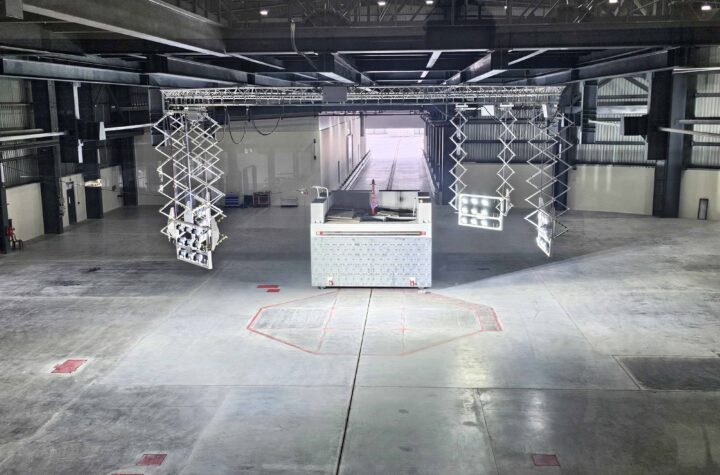
TAE Technologies, the world’s largest private fusion energy company, today
announced a landmark partnership with Japan’s National Institute for Fusion
Science (NIFS) that enables the two organizations to test the effects of
hydrogen-boron (p-B11) fusion reactions in the NIFS Large Helical Device
(LHD). The results of this research have the potential to unlock a new
milestone in TAE’s mission to develop commercial fusion power with p-B11,
the cleanest and most affordable fuel for fusion cycles.
Fusion is the process of combining elements to release large amounts of
energy. It is a carbon-free, baseload energy solution to address both
climate change and the growing global energy demand.
Most fusion efforts around the world are focused on combining hydrogen
isotopes deuterium-tritium (D-T) to use as fuel; the donut-shaped tokamak
machines commonly used in fusion concepts are limited to D-T fuel.
In contrast, TAE’s compact linear design uses an advanced beam-driven
field-reversed configuration (FRC) that can accommodate all available fusion
fuel cycles, including D-T and deuterium-helium-3 (D-He-3), a benefit that
uniquely enables the company to license its technology on the way to its
ultimate goal of connecting the first p-B11 fusion power plant to the grid
by the end of this decade.
TAE is developing commercial fusion power plants using p-B11 because it is
the most economical and environmentally friendly fuel cycle for fusion.
P-B11 eliminates the need for breeding tritium, thus offering cleaner, safer
operations while maximizing the durability and lifetime of the fusion plant.
The boron in p-B11 is ubiquitous in nature, found in vast deposits in the
earth’s crust and sea water, and is used in detergents and other industrial
commodities. The partnership between NIFS and TAE represents the first
public-private fusion research using this advanced fuel.
NIFS is an inter-university research institute located in Toki City and
works with preeminent organizations both in Japan and globally. TAE’s
scientists will collaborate with a team run by Professor Zensho Yoshida,
Director General of NIFS.
The three-year joint research project, which began in September, calls for
the technical teams to install sensors inside the NIFS stellarator to detect
benign helium nuclei, also known as alpha particles, which are produced by
p-B11 fusion reactions to monitor the internal effects of the fuel on the
containment walls in order to produce the best plasma confinement and
strongest, most resilient machinery for fusion power plants.
“Our partnership with NIFS is a significant opportunity to offer proof of
concept for TAE’s preferred fuel cycle and accelerate commercialization of
p-B11 fusion, which represents the cleanest, most elegant and abundant
energy source on earth,” said Michl Binderbauer, CEO of TAE Technologies.
“We expect this research to yield new insights that will help us further
optimize our fusion platform for global adoption and long-term
sustainability.”
“The collaborative relations between the US and Japan started with vigor
when President Carter and Prime Minister Fukuda signed a treaty on US-Japan
fusion collaboration in 1978,” said Toshiki Tajima, Chief Science Officer of
TAE Technologies. “In particular, scientists from NIFS such as Prof. Momota
visited the US to explore aneutronic fusion research in 1980s. I believe our
experimental collaboration with NIFS will quickly culminate in the world’s
first p-B11 aneutronic fusion demonstration. This joint effort shows that
the union of two complementary parties can yield an outcome greater than the
sum of its parts – similar to the transformative properties of fusion energy
itself.”
“The development and commercialization of grid-scale fusion energy is a
priority in the face of climate change,” said Prof. Masaki Osakabe,
Executive Director of the NIFS Large Helical Device Project. “We are excited
to provide this opportunity to research the effects of advanced fuels for
fusion with a leader in p-B11, and we look forward to sharing the results.”
In April, TAE announced $280M in additional funding based on achieving a
fusion technology milestone that gives the company a high degree of
confidence that its unique compact configuration can scale to
cost-competitive utility-scale fusion power.
In September, TAE launched a Power Management division, which is currently
commercializing the proprietary energy storage technology that has been
deployed in the company’s fusion platform since 2017 for first-of-its-kind
advances including residential and commercial energy storage; electric
vehicle performance, range, and charging; and overall improvements to grid
infrastructure to create a connected clean energy ecosystem.
ABOUT TAE TECHNOLOGIES
TAE Technologies (pronounced T-A-E) was founded in 1998 to develop
commercial fusion power with the cleanest environmental profile, and
represents the fastest, most practical, and economically competitive
solution to bring abundant energy to the grid. With over 900 issued patents,
more than $880 million in private capital, six generations of National
Laboratory-scale devices, and an experienced team of over 250 employees, TAE
is now on the cusp of delivering this transformational energy source capable
of sustaining the planet for centuries. The company’s revolutionary
technologies have produced a robust portfolio of commercial innovations in
other large adjacent markets such as power management, energy storage,
transmission, electric mobility, life sciences, and more. TAE is based in
California and maintains international offices in the UK and Switzerland.
Multidisciplinary and mission-driven by nature, TAE is leveraging
proprietary science and engineering to create a bright future for us all.









More Stories
MESSRING completes new crash test facility for Mahindra in India
ROHM Develops an Ultra-Compact MOSFET Featuring Industry-Leading* Low ON-Resistance Ideal for Fast Charging Applications
More than 30 of the top 50 global suppliers have production facilities in Turkey